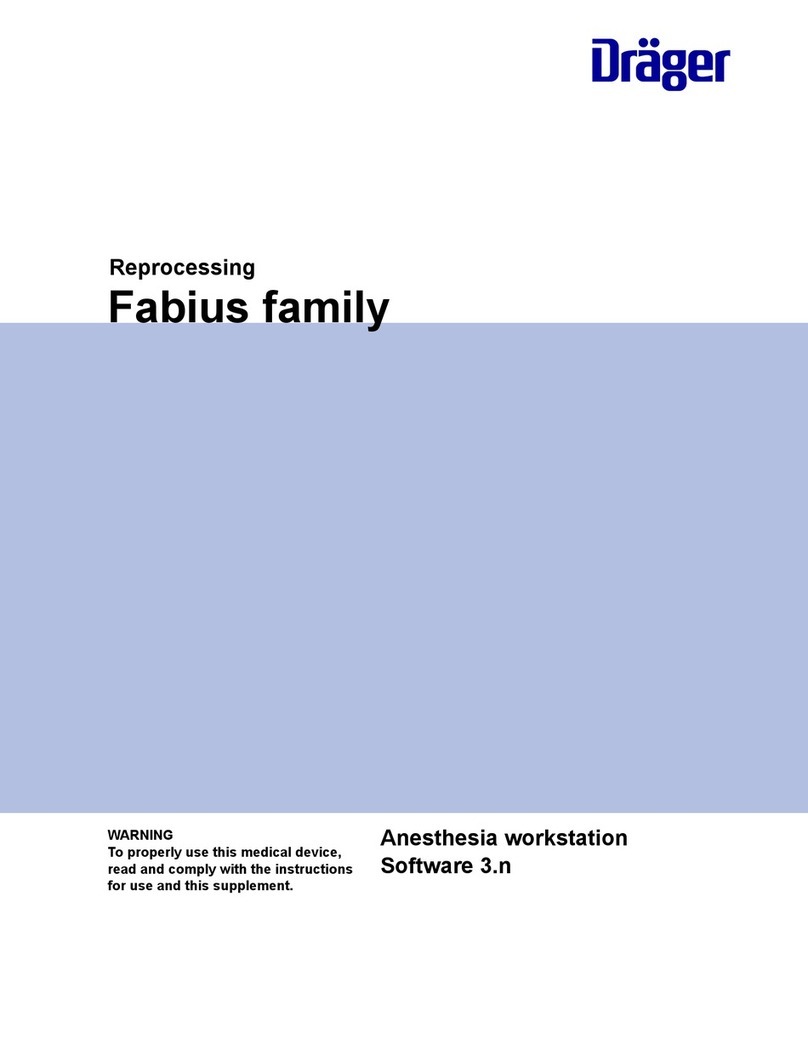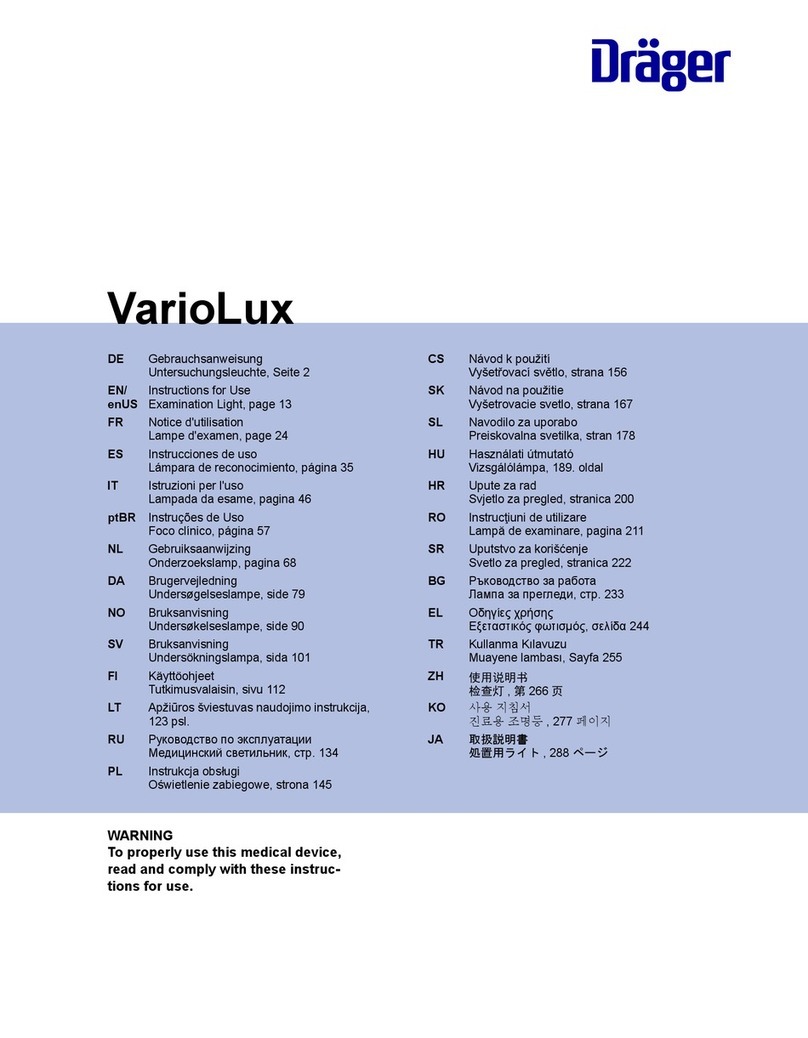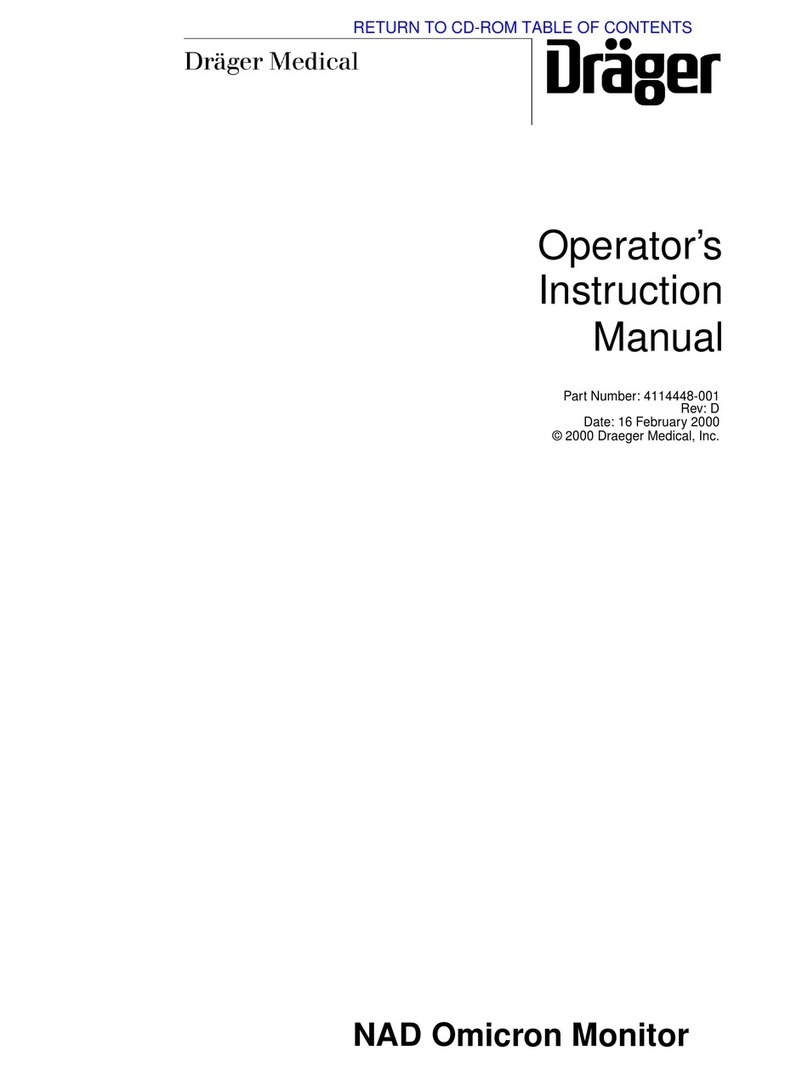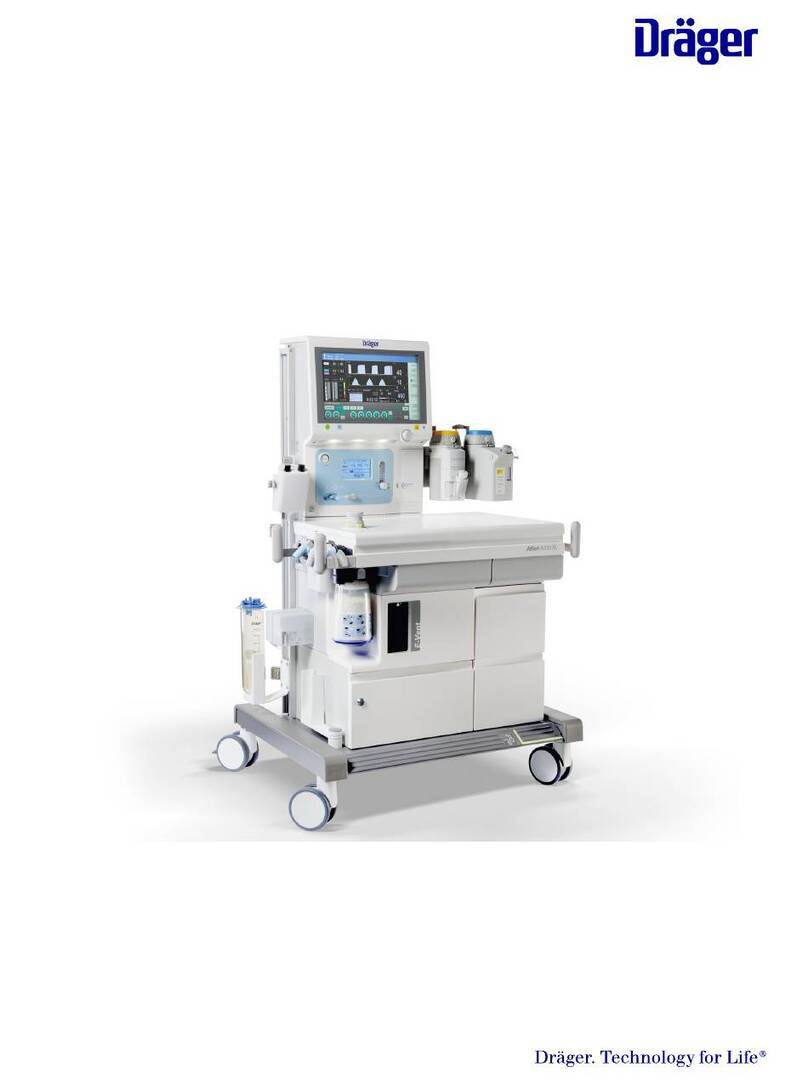Dräger Infinity M300 series User manual
Other Dräger Medical Equipment manuals

Dräger
Dräger Fabius GS SW 3.n User manual

Dräger
Dräger AGS User manual

Dräger
Dräger Oxy K 30 E User manual

Dräger
Dräger Oxylog 2000 plus User manual

Dräger
Dräger Evita 2 Dura Supplement

Dräger
Dräger Primus SW 4.5n User manual

Dräger
Dräger Babytherm 8000 LDR User manual

Dräger
Dräger VarioLux User manual

Dräger
Dräger Primus Series User manual

Dräger
Dräger Polaris 50 User manual

Dräger
Dräger Panorama Nova P User manual

Dräger
Dräger caleo User manual

Dräger
Dräger Infinity Cockpit User manual

Dräger
Dräger WBR82 User manual

Dräger
Dräger Babylog VN500 Quick start guide

Dräger
Dräger Babytherm 8004 User manual

Dräger
Dräger NAD Assembly instructions

Dräger
Dräger Interlock Series User manual

Dräger
Dräger PSS 5000 S Series User manual

Dräger
Dräger Evita V800 User manual
Popular Medical Equipment manuals by other brands

Getinge
Getinge Arjohuntleigh Nimbus 3 Professional Instructions for use

Mettler Electronics
Mettler Electronics Sonicator 730 Maintenance manual

Pressalit Care
Pressalit Care R1100 Mounting instruction

Denas MS
Denas MS DENAS-T operating manual

bort medical
bort medical ActiveColor quick guide

AccuVein
AccuVein AV400 user manual

























